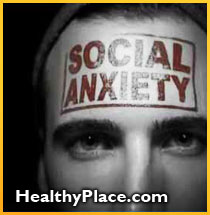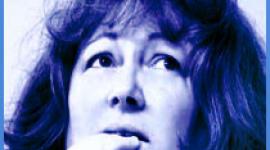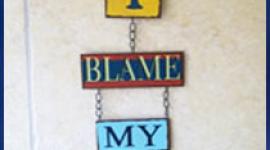Social Phobia: Extreme Shyness and Fear of Public Performance
What is social phobia? Learn about the symptoms, causes and treatments of social phobia - extreme shyness.
 Many people get a minor case of the jitters before performing in public. For some, this mild anxiety actually enhances their performance. However, this anxious reaction is massively exaggerated in the individual with social phobia. While mild normal anxiety can actually enhance performance, excessive anxiety can severely impair performance.
Many people get a minor case of the jitters before performing in public. For some, this mild anxiety actually enhances their performance. However, this anxious reaction is massively exaggerated in the individual with social phobia. While mild normal anxiety can actually enhance performance, excessive anxiety can severely impair performance.
An anxious episode may be associated with some or all of the symptoms of a panic attack. These might include sweaty palms, palpitations, rapid breathing, tremulousness and a sense of impending doom. Some individuals, particularly those with generalized social phobia may have chronic anxiety symptoms. Individuals with social phobia may turn down accelerated classes and after school activities because of their fears that these situations will lead to increased public scrutiny.
The individual with a specific social phobia feels anxious during the feared social situation and also when anticipating it. Some individuals may deal with their fear by arranging their lives so that they do not have to be in the feared situation. If the individual is successful at this, he or she does not appear to be impaired. Types of discrete social phobia may include:
- Fear of public speaking - by far the most common. This seems to have a more benign course and outcome.
- Fear of interacting socially at informal gatherings (making small talk at a party)
- Fear of eating or drinking in public
- Fear of writing in public
- Fear of using public washrooms (bashful bladder) Some students may only urinate or defecate at home.
Individuals with generalized social phobia are characterized as extremely shy. They often wish that they could be more socially active, but their anxiety prevents this. They often have insight into their difficulties. They often report that they have been shy most of their lives. They are sensitive to even minor perceived social rejection. Because they become so social isolated, they have greater academic, work and social impairment. They may crystallize into an avoidant personality disorder.
Social phobia is the third most common psychiatric disorder. (Depression 17.1% Alcoholism 14.1% Social phobia 13.3%.) (Kessler et al 1994.) Onset is usually in childhood or adolescence. It tends to become chronic. It is often associated with depression, substance abuse and other anxiety disorders. The individual usually seeks treatment for one of the other disorders. Individuals with SP alone are less likely to seek treatment than people with no psychiatric disorder (Schneier et al 1992) Social phobia is vastly under-diagnosed. It is not as likely to be noticed in a classroom setting because these children are often quiet and generally do not manifest behavior problems. Children with SP often show up with physical complaints such as headaches and stomach aches. Parents may not noticed the anxiety if it is specific to situations outside the home. Additionally, since anxiety disorders often run in families, the parents may see the behavior as normal because they are the same way themselves. On the other hand, if the parent has some insight into his of her own childhood anxieties, he or she may bring the child into treatment so that the child will not have to experience the pain the parent experienced as a child.
Treatment of Social Phobia:
Psychotherapy: There is the most evidence for cognitive-behavioral psychotherapy. Since the child or adolescent is more dependent on his parents than an adult, the parents should have some adjunctive family therapy.
Both individual and group therapy are useful. The basic premise is that faulty assumptions contribute to the anxiety. The therapist helps the individual identify these thoughts and restructure them.
- Identifying out automatic thoughts: If I sound nervous when I present my paper, my teacher and classmates will ridicule me. The patient then identifies his physiological and verbal responses to the thoughts. Finally he identifies the mood associated with the thoughts.
- Irrational beliefs that underlie automatic thoughts:
Emotional reasoning: "If I am nervous, then I must be performing terribly."
All or nothing: Absolute statements that do not admit any partial success of gray areas. "I am a failure unless I make an A."
Overgeneralization: One unfortunate event becomes evidence that nothing will go well. Should thoughts: Insisting that an unchangeable reality must change in order for one to succeed.
Drawing unwarranted conclusions: Making connections between ideas that have no logical connection.
Catastrophizing: Taking a relatively small negative event to illogically drastic hypothetical conclusions.
Personalization: Believing that an event has special negative relationship to oneself. ("The whole group got a bad grade because my hands trembled during my part of the presentation".) Selective negative focus: Only seeing the negative parts of an event and negating any positive ones. - Challenge negative beliefs: Once the patient and therapist have identified and characterized the negative thoughts, the therapist should help the patient examine the lack of data supporting the beliefs and look for other explanations of what the patient sees.
Exposure: Create a hierarchy of feared situations and start to allow one to experience them. One starts with situations that only elicit a little anxiety and then gradually move up to more intense experiences. This must be done in reality, not just as visualization in the office.
Group therapy: This can be a powerful modality for individuals with social phobia. A patient may need to use individual therapy to prepare for group therapy. In the group patients can encourage each other and can try out new behaviors within the safety of the group. They can get immediate feedback that may refute their fears. Patients should not be forced to participate more actively than they wish.
Medications Used to Treat Social Phobia:
Recent studies have shown that some of the SSRI medications can be helpful in the reatment of Social Phobia. Paroxetine (Paxil) have been approved by the FDA for treatment of Social Phobia. Other medications that may be useful include: blockers (propranolol, atenolol) Benzodiazepines, MAO inhibitors (Parna (lorazepam, clonazepam) buspirone, and Nardil.) MAO Inhibitors are only rarely used in children and adolescents because one must go on dietary restrictions while taking them.
References:
Kessler R.C. McGonagle, K.A. Zhao, S., Nelson, C.B., Hughes, M., Eshleman, S., Wittchen, H.U., and Kendler, K.S.(1994) Lifetime and 12-month prevalence of DSM-III-R psychiatric disorders in the United States. Results from the National Comorbidity Survey. Archives of General Psychiatry, 51, 8-19.
Kessler, R.C., Stein, M.B., Berglund, P. (1998) Social Phobia Subtypes in the National Comorbidity Survey. American Journal of Psychiatry, 155:5.
Murray, B., Chartier, M.J., Hazen, A.L., Kozak, M.V.Tancer, M.E., Lander, S., Furer, P., Chutbaty, D., Walker, J.R. A Direct Interview Family Study of Generalized Social Phobia. American Journal of Psychiatry, (1998) 155: 1.
Pollack, M.H., Otto, M.W.Sabatino, S., Majcher, D., Worthington, J.J. McArdle, E.T., Rosenbaum, J.F. Relationship of Childhood Anxiety to Adult Panic Disorder: Correlates and Influence on Course. American Journal of Psychiatry. 153: 3.
Schneier, F.R., Johnson, J., Hornig, C.., Liebowitz, M.R. and Weissman, M.M. (1992) Social Phobia: Comorbidity and morbidity in a epidemiologic sample. Archives of General Psychiatry, 49, 282-288
About the author: Carol E. Watkins, MD is board-certified in child, adolescent and adult psychiatry and is based in Baltimore, MD.
next: Stress: A Case Study
~ anxiety-panic library articles
~ all anxiety disorders articles
APA Reference
Staff, H.
(2000, January 1). Social Phobia: Extreme Shyness and Fear of Public Performance, HealthyPlace. Retrieved
on 2025, December 23 from https://www.healthyplace.com/anxiety-panic/articles/social-phobia-extreme-shyness-fear-of-public-performance



